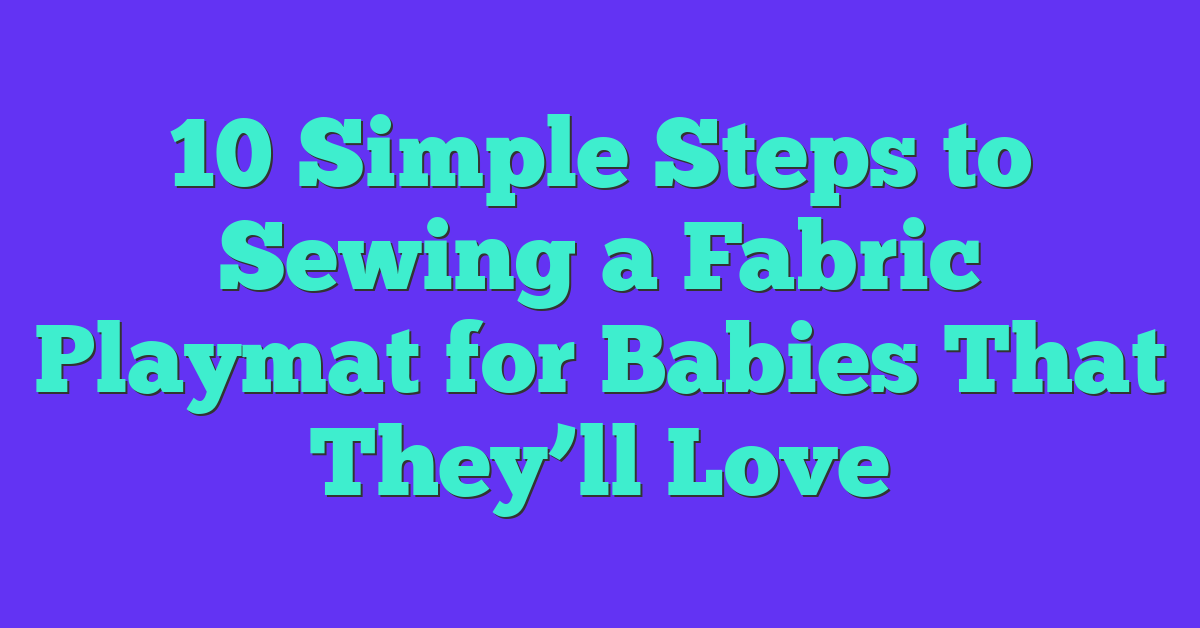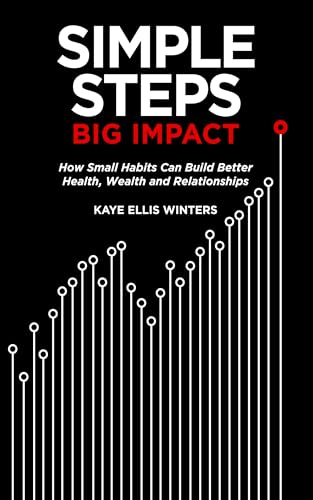There’s something so special about creating something with your own hands, especially when it’s for a little one. Sewing a fabric playmat for babies is not just a fun project; it’s a chance to craft something unique and full of love. Whether it’s for your baby or a thoughtful gift, a handmade playmat adds a personal touch that store-bought items just can’t match.
Benefits Of Sewing A Fabric Playmat For Babies
Creating a fabric playmat provides personalized comfort and safety for babies. Handmade playmats let you select baby-safe fabrics like organic cotton or hypoallergenic blends, ensuring a soft, non-toxic surface for tummy time or play activities.
A custom playmat aids sensory development with textures, colors, and patterns. Adding features like crinkly fabric, soft appliqués, or embroidered elements introduces visual and tactile stimulation, fostering curiosity and engagement during play.
Hand-sewn playmats allow for tailored sizes and portability. You can design a mat to fit specific play areas, fold easily for storage, or use on-the-go, making it both functional and convenient.
The durability of a handmade playmat surpasses store-bought options. Reinforced stitching and high-quality materials withstand frequent washing and intense baby use, resulting in a long-lasting item for everyday activities.
Sewing a playmat also creates an emotional connection. Personalizing it with unique designs, colors, or special embroidery gives it sentimental value, transforming it into a cherished memory for both you and the baby.
Choosing The Right Materials
Selecting appropriate materials is essential when sewing a fabric playmat for babies. Proper choices ensure comfort, safety, and durability while complementing the design.
Types Of Fabric
Soft, durable materials work best for baby playmats. I recommend starting with organic cotton, as it’s gentle on sensitive skin and free of harmful chemicals. Fleece or minky fabric adds a plush layer, perfect for cushioning. Quilting cotton can be ideal for the top layer due to its structure and variety of patterns. For the backing, non-slip fabrics or canvas improve stability during use.
Layering multiple fabrics can enhance the playmat’s functionality. For example, adding batting between layers increases comfort and padding. Waterproof fabric, placed as an inner lining, protects against spills and makes cleaning easier.
Safety Considerations
All chosen materials should be baby-safe and non-toxic. Verify that fabrics are OEKO-TEX certified, ensuring they’re free from harmful substances. Avoid embellishments like loose buttons or sharp zippers that pose choking hazards or discomfort. Edges need secure stitching, preferably with reinforced seams, to avoid fraying during heavy use.
Check for flame-retardant properties if required for safety compliance. Hypoallergenic materials are another priority to reduce irritation risks for sensitive babies. Regular pre-washing of fabric is vital to remove residues and potential shrinkage before assembly.
Tools And Supplies Needed
Creating a fabric playmat requires a set of essential tools and supplies to ensure a smooth sewing process. Each item contributes to crafting a durable and safe playmat for babies.
Sewing Tools
- Sewing Machine: A reliable machine simplifies stitching, ensuring consistent seams for durability.
- Fabric Scissors: Sharp scissors are crucial for clean, precise fabric cuts.
- Rotary Cutter and Cutting Mat: These help achieve straight edges, especially for large fabric pieces.
- Measuring Tape: Accurate measurements ensure proper sizing of the playmat.
- Pins and Clips: These secure layers of fabric and batting during assembly.
- Seam Ripper: Mistakes happen; this tool assists in removing unwanted stitches neatly.
Fabric and Materials
- Main Fabric: Use soft, baby-safe materials like organic cotton or quilting cotton.
- Batting: Adds cushioning for comfort. Polyester or cotton batting works well.
- Backing Fabric: Choose non-slip materials like canvas or rubberized fabric for stability.
- Binding Tape: Neatly finishes the mat’s edges and prevents fraying.
- Waterproof Layer (Optional): Protects against spills, enhancing functionality.
Additional Supplies
- Thread: Strong, color-matching or contrasting thread enhances durability and design.
- Marking Tools: Fabric markers or chalk are useful for drawing sewing lines or patterns.
- Iron and Ironing Board: Pressing fabric eliminates wrinkles, ensuring smooth assembly.
- Needles: Use sturdy, size-appropriate needles for thicker layers.
Safety Considerations
- Baby-Safe Materials: Confirm all fabrics and notions are non-toxic and certified safe.
- Durable Embellishments: Opt for securely attached decorations like sewn appliques over potentially hazardous items like buttons.
Having the right tools and supplies simplifies the sewing process and enhances the finished playmat’s quality, safety, and appearance.
Step-By-Step Guide To Sewing A Fabric Playmat
Creating a fabric playmat for babies requires careful planning, precise cutting, and thoughtful assembly. Each step ensures the playmat’s comfort, safety, and functionality.
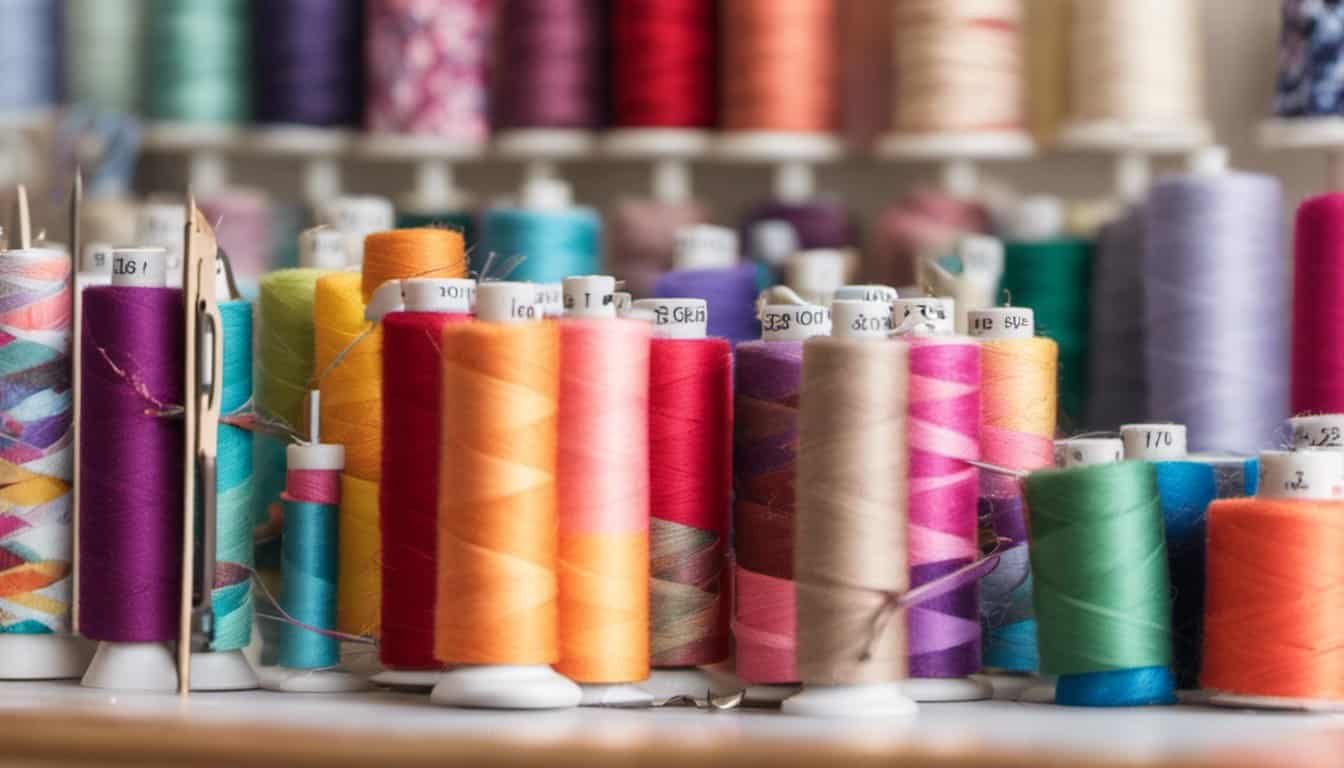
Planning And Designing
I start by deciding on the playmat’s size and shape, considering the baby’s play area. Square or rectangular shapes work well, typically between 40×40 and 60×60 inches. I select designs with bright colors and various patterns to stimulate sensory engagement. Including pockets, appliqué, or interactive features like crinkle fabric adds extra fun for the baby.
For materials, I align the fabric and batting choices with my design. I recommend soft, breathable fabrics like organic cotton for the top and a non-slip backing material for stability. To avoid overwhelm, I sketch the layout and note the layers and elements to assemble before starting.
Cutting And Preparing The Fabric
Accurate cutting is critical to ensuring proper alignment during assembly. I use a rotary cutter and self-healing mat to cut my fabrics and batting to the desired dimensions. For a clean finish, I trim the edges evenly and double-check measurements.
I prepare all fabric pieces by pre-washing them, which prevents shrinkage later. After drying, I press the fabric with an iron to remove wrinkles and creases. If the design includes appliqué or interactive features, I cut and stabilize those pieces too. Marking tools help outline placements directly onto the fabric.
Sewing And Assembly
I layer the materials carefully to ensure a secure and polished playmat. The top layer faces up, the batting goes in the middle for cushioning, and the backing fabric faces down. I pin around the edges to hold them in place before stitching.
« How to Sew a Pencil Skirt with a Zipper: Easy Step-by-Step Guide for Beginners
How to Make a Maxi Dress with a Simple Pattern: Easy DIY Guide for Perfect Results »
Using a sewing machine with a straight stitch, I sew along the edges, leaving a 4-6 inch gap to turn the mat right-side out. Once turned, I press the edges flat and topstitch around the perimeter to close the opening and add durability. Adding quilted lines or patterns secures the layers and enhances the design.
For any embellishments like embroidery or textured fabrics, I make sure all stitching is durable and free of loose threads to keep the baby safe. The final step is a thorough check for flaws or unfinished areas before the playmat is ready for use.
Creative Ideas For Customizing Your Playmat
Adding creative touches to your playmat makes it unique and more engaging for babies. Here are some ideas to inspire customization:
- Incorporate Interactive Elements
Attach fabric tabs, ribbons, or loops along the edges for tactile exploration. Sew small pockets for hidden surprises like soft toys or textured materials. Add crinkly fabric or squeaky inserts in different sections to spark sensory play.
- Use Appliqué Designs
Stitch playful appliqué shapes, like animals, stars, or letters, with contrasting fabrics to create visual stimulation. Secure edges with zigzag stitches to prevent fraying and ensure durability.
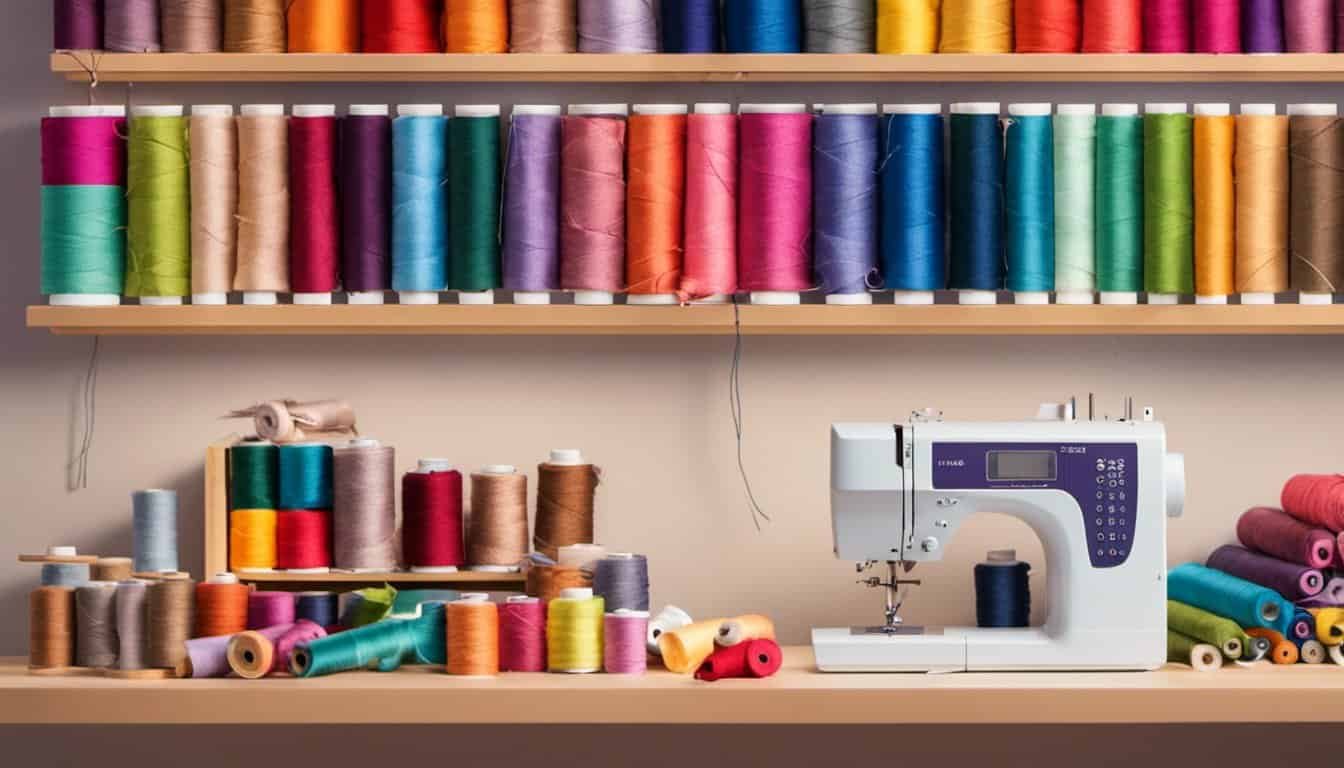
- Personalize With Embroidery
Embroider the baby’s name, birthdate, or a favorite design onto the playmat. This adds a personal touch and transforms it into a keepsake. Use baby-safe thread and ensure all stitching is secure.
- Create a Themed Playmat
Design a theme like outer space, a jungle, or a farm. Use pattern combinations and appliqués that match the theme, such as planets for outer space or animals for a jungle.
- Experiment With Textures
Combine fabrics like velvet, minky, and corduroy to add variety. Babies enjoy exploring surfaces with different tactile feels.
- Add a Colorful Patchwork Design
Sew together squares or triangles in vibrant colors or patterns for a patchwork effect. This adds visual interest and stimulates color recognition.
- Include Learning Features
Sew letters, numbers, or simple shapes onto the fabric to create an educational element. Use high-contrast colors for better visibility.
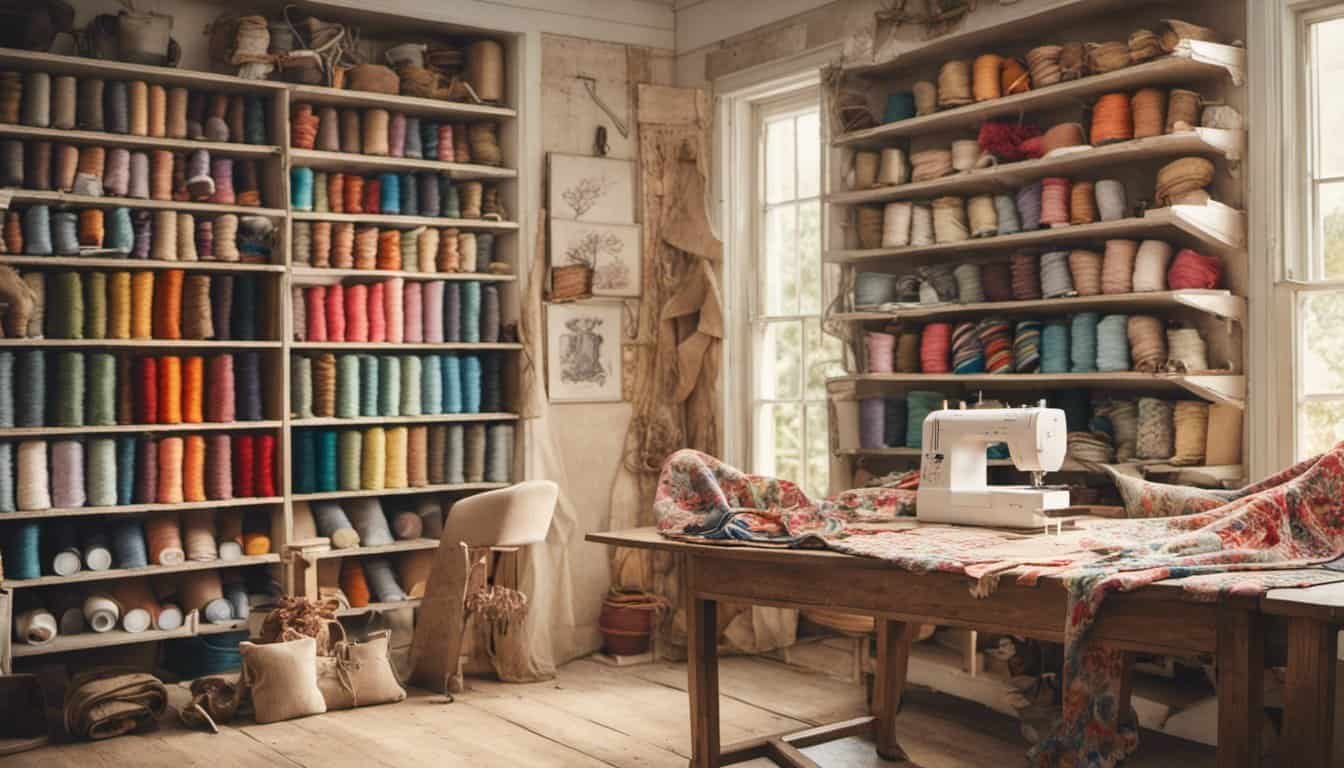
- Attach a Non-Slip Backing
Stitch a non-slip material, like grippy fabric or rubberized backing, to ensure safety during playtime on smooth surfaces.
- Incorporate Waterproof Layers
Add a waterproof layer under the top fabric to protect against spills. Choose a baby-safe material like PUL (polyurethane laminate).
Each addition enhances the playmat’s aesthetic and play value. Always secure embellishments firmly and use non-toxic materials to prioritize safety.
Tips For Maintaining And Cleaning The Playmat
Proper maintenance preserves the playmat’s durability and keeps it hygienic for the baby. Here are essential tips:
Regular Cleaning Routine
Wipe down the playmat daily with a damp cloth if spills or drool are frequent. Use a mild, non-toxic detergent diluted with water to clean the surface without damaging the fabric.
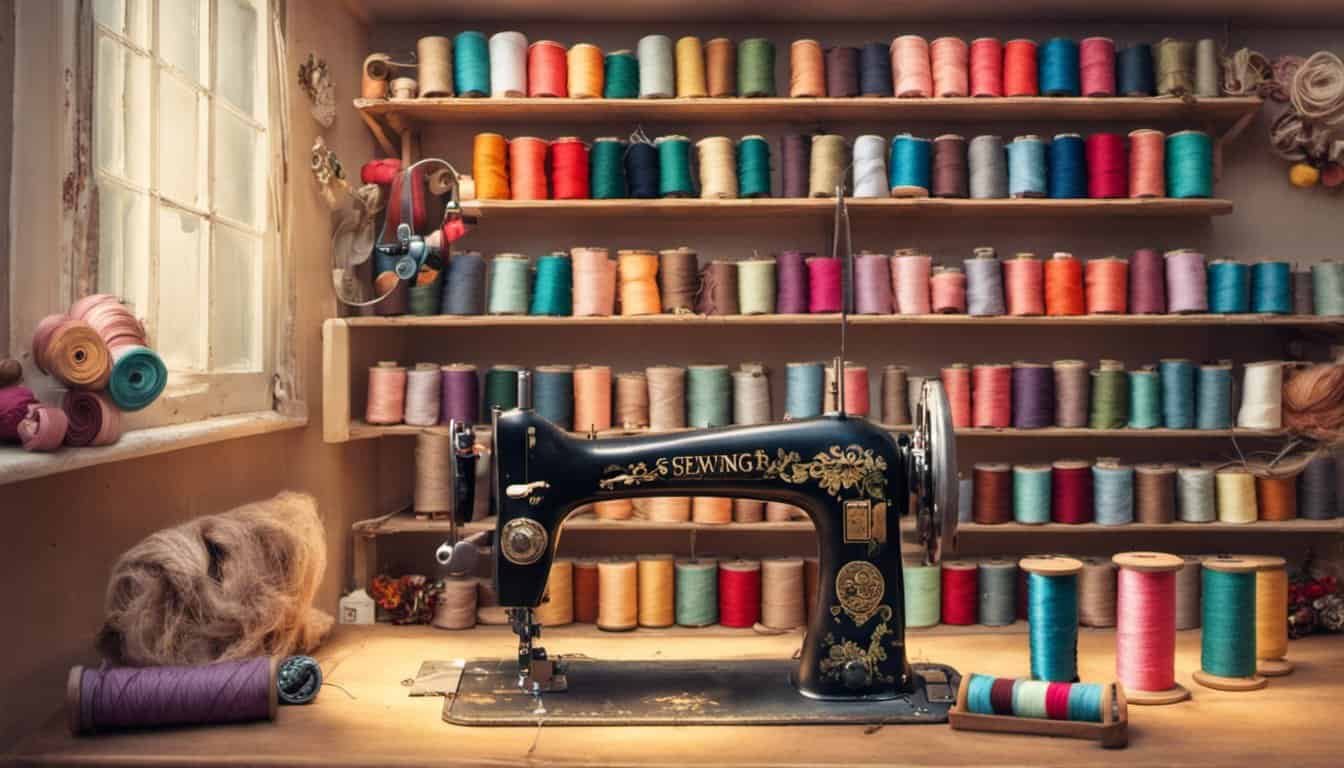
Machine Washing Instructions
If the playmat’s materials are machine-safe, wash it on a gentle cycle with cold water. Use a baby-safe detergent to prevent irritation. Avoid using fabric softeners as they may degrade the playmat’s surface or cushioning.
Drying Recommendations
Air-dry the playmat whenever possible to preserve its shape and avoid shrinkage. Hang it on a clothesline or lay it flat on a clean, dry surface. If using a dryer, select a low-heat setting.
Addressing Stains
Treat stains immediately by blotting the area with a clean cloth and water. For tougher stains, mix baking soda with water to create a paste, apply it gently to the stain, and rinse thoroughly.
Sanitizing For Hygiene
Sanitize the playmat every few weeks or as needed by spraying a baby-safe disinfectant or a diluted vinegar solution. Let it air out completely before allowing the baby to use it again.
Inspecting For Wear
Check stitching, fabric layers, and interactive elements like tabs or pockets for wear or damage during each cleaning. Repair loose threads or fraying edges promptly to maintain safety.

Storing Correctly
When the playmat isn’t in use, store it in a breathable bag to protect it from moisture and dust. Keep it away from direct sunlight to prevent fabric fading.
Following these care practices helps the playmat remain a safe, clean, and inviting space for the baby to explore.
Conclusion
Sewing a fabric playmat for a baby is such a rewarding project. It’s not just about creating something functional—it’s about pouring love and care into every stitch. The joy of knowing you’ve made a safe, cozy, and personalized space for a little one to play and explore is truly unmatched.
Whether it’s simple or packed with creative touches, a handmade playmat becomes more than just a play area. It’s a keepsake filled with memories and meaning. So grab your favorite fabrics, let your creativity flow, and enjoy the process of crafting something so special!


